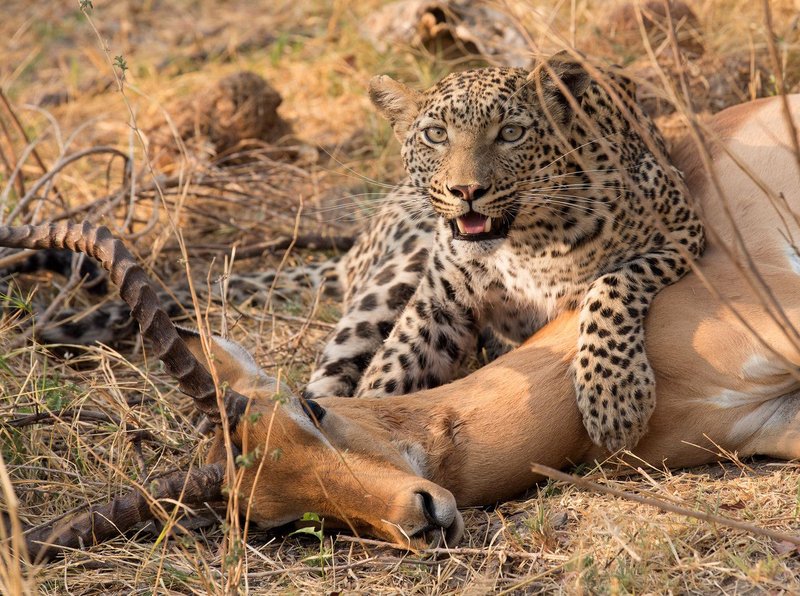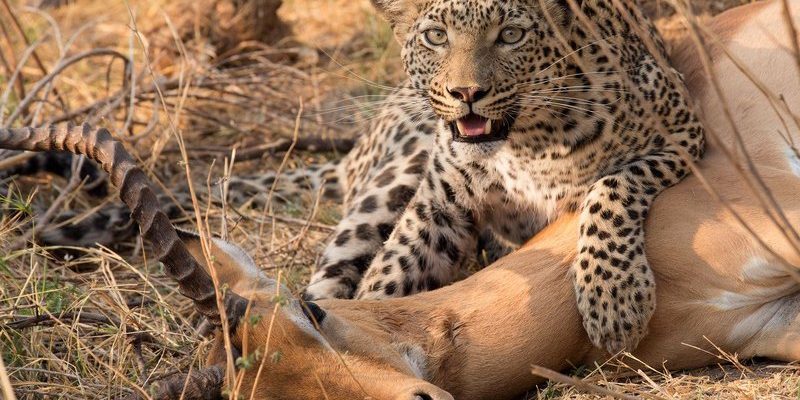
Encounters with wild animals can be unpredictable, especially with a powerful predator like the African leopard. Understanding how to react can make a significant difference for both you and the animal. This isn’t just a matter of safety; it’s about appreciating and respecting wildlife and their habitat. So, let’s break down what to do if you find yourself face-to-face with one of these stunning big cats.
Recognizing African Leopards
Before we dive into what you should do during an encounter, let’s get familiar with what an African leopard looks like. These cats are sleek, with a beautiful coat patterned with rosettes. They’re about the size of a medium dog, weighing anywhere from 80 to 200 pounds. If you’re not sure if you’re looking at a leopard, just remember their unique spots—no two are alike, similar to human fingerprints.
Leopards are also incredibly agile and stealthy hunters. They often hunt at night, which means they’re most active during dusk and dawn. Understanding their behavior can help you stay alert. If you’re hiking early in the morning or late in the evening, you might be more likely to cross paths with one.
Stay Calm and Don’t Run
First things first: if you encounter an African leopard, stay calm. It’s natural to feel anxious, but sudden movements can startle the animal. The best thing you can do is to remain still and avoid direct eye contact. Leopards may perceive eye contact as a challenge, which can provoke a defensive reaction.
Instead of running away, which could trigger their chase instinct, back away slowly. Move sideways if you can, keeping the leopard in your peripheral view. This way, you’re less likely to provoke it while also ensuring you don’t trip over anything. Honestly, it’s a bit like trying to gracefully exit a party when you realize you’ve accidentally wandered into the wrong one.
Assess the Situation
While you’re staying calm, take a moment to assess the encounter. Is the leopard aware of you? If it’s just lounging in the shade, it might not even care about your presence. However, if it looks curious or agitated—ears perked up, tail twitching—that’s a sign to be extra careful.
Consider your surroundings as well. Are you in a safe area, or are there dense bushes or tall grass nearby? Leopards can easily hide and stalk when they feel threatened or want to chase prey. If the landscape around you gives way to potential hiding spots, it’s even more crucial to be aware of your surroundings.
If the leopard seems uninterested and continues to rest, take a few slow steps back, maintaining a safe distance. Let it go about its business.
Making Yourself Appear Larger
If a leopard seems curious and approaches you, make yourself look larger. Raise your arms, open your jacket, or hold any items you have, like a backpack. The goal is to look imposing rather than a potential prey item.
You might also want to make noise—shout or clap your hands in a calm, authoritative manner. It can be surprising how a little sound can make you feel more in control of the situation. But be careful not to roar or scream; you want to assert your presence without sounding frantic. Remember, you’re not trying to scare it away with aggression, just reminding it that you’re there and not a target.
Understanding Leopard Behavior
Understanding how leopards behave can help you navigate the encounter more effectively. They’re solitary animals and generally prefer to avoid humans. However, if they feel cornered or threatened, they might show aggression. Observing their body language can give you clues.
– If a leopard crouches low, it’s likely preparing to stalk or attack.
– If it turns away, that’s usually a good sign—it’s looking to escape rather than engage.
Try to trust your instincts, but also educate yourself about their behavior before heading into the wild. The better you understand these big cats, the more prepared you’ll be.
What to Do If Confronted
In the rare event that a leopard approaches aggressively, your approach must change. Make a loud noise, and stand your ground. You might think of this as the wildlife version of standing up to a bully. Show that you’re not an easy target.
You can also try to back away slowly while keeping your eyes on the leopard, making sure it doesn’t get too close. If it charges, stand firm and get ready to defend yourself if necessary. But remember, they usually prefer to avoid confrontation. The chances are high that they’ll retreat if they sense you’re not frightened.
Traveling in Groups for Safety
Whenever you’re in leopard country, travel with others. There’s safety in numbers. Not only can you share the experience, but you’re also less likely to draw the attention of a solitary leopard.
In a group, keep talking normally; animals are often skittish around loud noises. Just be sure not to startle them! Stick together, walk in a line, and maintain awareness of your surroundings. You can even designate someone to keep an eye out for wildlife while the others enjoy the scenery. This way, you can appreciate nature without fear.
Respecting Wildlife and Their Habitat
Finally, it’s essential to remember that leopards play a crucial role in their ecosystem. They help control prey populations, which keeps ecosystems balanced. Respecting their habitat means keeping your distance and minimizing your impact on their environment.
If you do spot a leopard, consider it a remarkable privilege. More often than not, these encounters are fleeting, and ensuring they remain undisturbed is vital for their survival. You might think of it as borrowing a glimpse into their world—one that deserves respect and protection.
Encountering an African leopard can be a breathtaking experience, but it’s crucial to know how to react. By staying calm, understanding their behavior, and respecting their territory, you’ll not only keep yourself safe, but you’ll also contribute to the preservation of these incredible animals. So, next time you find yourself in the wild, remember these tips, and enjoy the beauty of nature!

